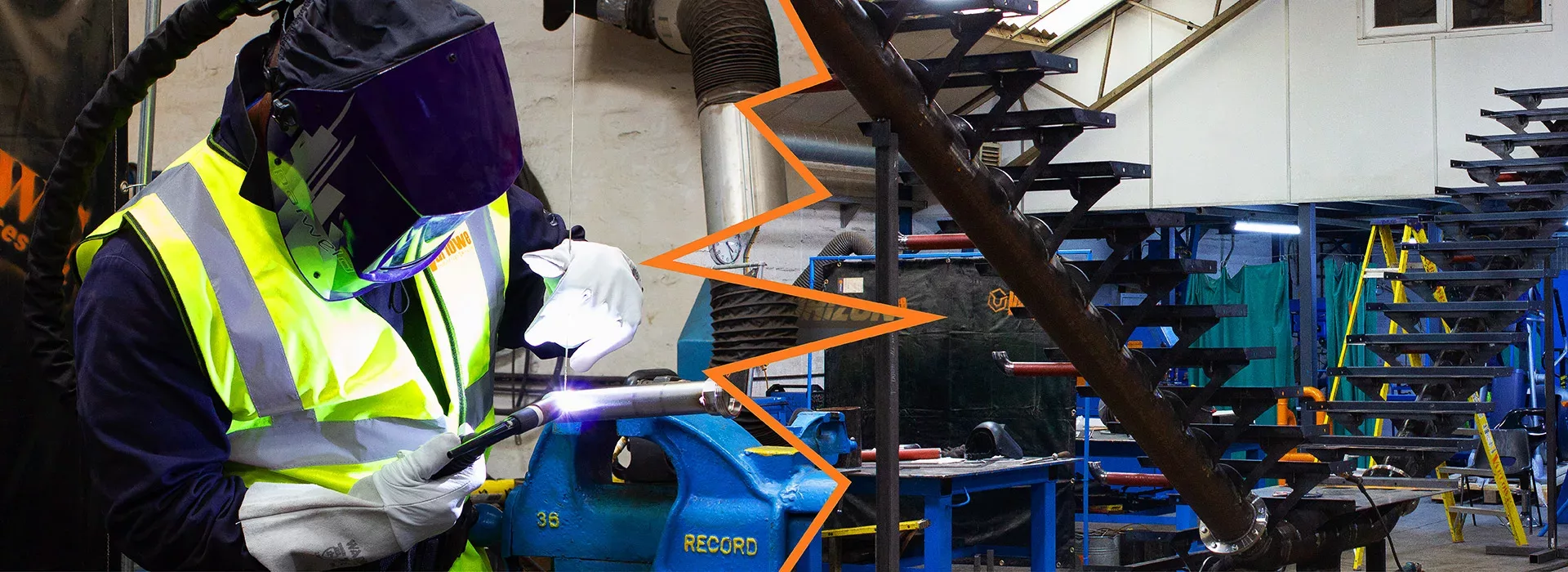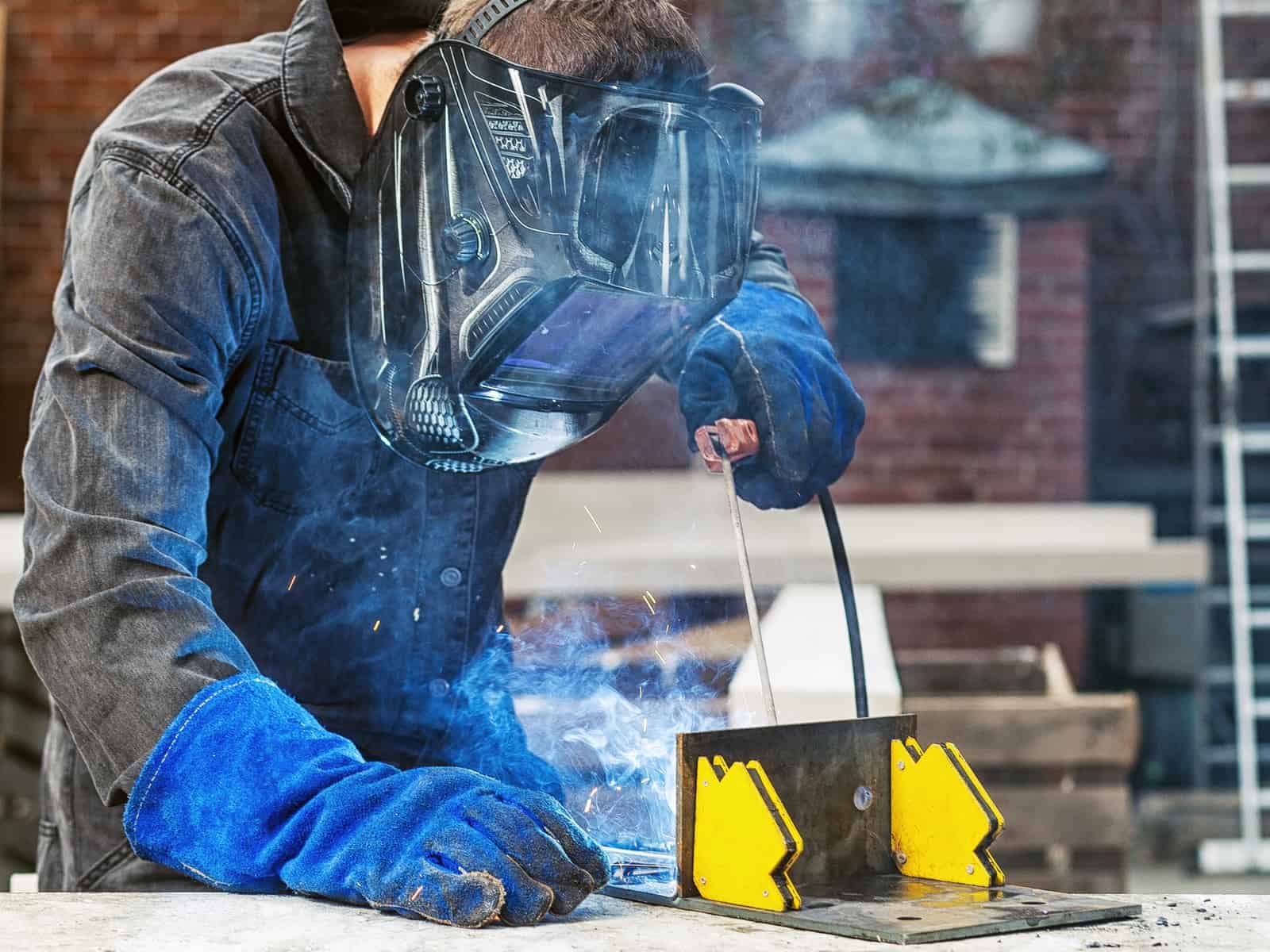Everything about Welding: Secret Insights Into Techniques and Ideal Practices for Success
Welding incorporates a variety of methods, each suited for specific products and applications. Recognizing these methods, such as GMAW, SMAW, and TIG, is crucial for attaining optimal results. In addition, the best tools and security practices can not be ignored. As preparation and fixing play vital roles in the welding process, grasping these aspects can considerably boost the quality of the end product. What are the essential variables that guarantee a successful weld?
Understanding Various Welding Strategies
Welding strategies encompass a variety of approaches, each suited to specific applications and products. Amongst one of the most usual methods are Gas Steel Arc Welding (GMAW), Secured Steel Arc Welding (SMAW), and Tungsten Inert Gas Welding (TIG) GMAW, likewise called MIG welding, is prominent for its rate and convenience, making it suitable for slim products. SMAW, or stick welding, is favored for its simpleness and performance in exterior atmospheres, especially with thicker metals. TIG welding uses precision and control, making it ideal for elaborate work and non-ferrous steels (Belgrade). Each method has its one-of-a-kind benefits and factors to consider, enabling welders to choose the best technique based upon the task's demands, product type, and preferred results. Comprehending these strategies is necessary for effective welding
Vital Welding Devices and Devices
While various welding strategies call for details abilities, the ideal devices and tools are just as necessary for accomplishing quality outcomes. Essential welding equipment includes welding machines, which vary relying on the strategy-- such as MIG, TIG, or stick welding. Protective gear, including safety helmets, aprons, and handwear covers, warranties safety and security and comfort throughout the procedure. Additionally, clamps and fixtures help protect materials in position, making sure accuracy in welds. Consumables like welding poles, wire, and securing gas are likewise vital components that affect the high quality of the weld. Furthermore, tools such as grinders and cutters assist in surface preparation and post-weld completing, adding to an expert end result. Spending in top quality devices inevitably enhances the effectiveness and efficiency of welding projects.
Security Practices in Welding
Correct safety techniques are vital in the welding market to protect workers from potential hazards. Welders need to put on suitable personal safety tools (PPE), consisting of helmets with proper shading, handwear covers, and flame-resistant garments. Appropriate air flow is essential to reduce direct exposure to harmful fumes and gases generated throughout the welding process. Furthermore, employees should be trained in the correct handling of welding devices to stop accidents. Fire safety actions, such as maintaining combustible materials away from the welding area and having fire extinguishers conveniently available, are needed. Normal assessments of devices and work areas can help determine prospective dangers before they result in accidents. By sticking to these security practices, welders can create a safer working setting and decrease risks related to their trade.
Readying Materials for Welding
Preparing materials for welding is an important step that substantially affects the top quality and honesty of the last item (Montana Mobile Welding and Repair Belgrade Fabrication). Appropriate preparation entails cleansing the surfaces to remove impurities such as rust, oil, and dust, which can endanger the weld. Techniques such as grinding, fining sand, or making use of solvents are generally used to achieve a clean surface. Furthermore, guaranteeing that the products fit with each other comfortably is essential; spaces can lead to weak welds. It's likewise essential to take into consideration the positioning and positioning of the parts, as this will certainly affect the simplicity of welding and the last result. Selecting the appropriate filler product and guaranteeing compatibility with the base steels is important for accomplishing solid, long lasting welds.
Tips for Getting High-Quality Welds
Attaining high-quality welds requires attention to detail and adherence to ideal methods throughout the welding process. Proper joint prep work is vital, guaranteeing surfaces are tidy and totally free from pollutants. Selecting the appropriate filler product and welding method based on the base metals is critical for ideal bonding. Maintaining consistent travel speed and angle while welding can stop flaws and promote uniformity. In addition, regulating warm input is necessary; extreme warm can result in warping and damaged joints. Consistently evaluating the welds throughout the procedure enables instant changes if necessary. Employing proper post-weld treatments, such as cleaning and stress and anxiety alleviation, can boost the resilience and honesty of the weld, ultimately guaranteeing an effective end result.
Troubleshooting Usual Welding Issues
Welding commonly presents difficulties that can impact the top quality and integrity of the end product. Common issues such as porosity, inconsistent weld grains, and getting too hot can develop, each requiring certain troubleshooting methods. Understanding these problems is crucial for welders to enhance their skills and attain perfect results.
Porosity Troubles Discussed
Porosity can often be overlooked, it remains a crucial issue in welding that can compromise the integrity of a completed item. Porosity describes the existence of small gas pockets within the weld grain, which can lead and compromise the joint to early failing. This issue normally emerges from pollutants, moisture, or inappropriate protecting gas protection during the welding procedure. To minimize porosity, welders should verify that the base products are completely dry and clean, utilize appropriate securing gases, and maintain constant welding parameters. Consistently checking the devices and environment can likewise assist identify prospective concerns prior to they materialize in the weld. Resolving porosity successfully is important for achieving solid, sturdy welds that fulfill high quality requirements.

Inconsistent Weld Beans
Irregular weld beads can greatly affect the high quality and stamina of a finished item. Numerous variables add to this issue, consisting of inappropriate travel speed, inaccurate amperage setups, and irregular electrode angles. When the welder moves too swiftly, a grain might appear narrow and do not have penetration, while relocating too slowly can cause excessive build-up. Furthermore, using the wrong amperage can result in either damaging or excessive spatter, both of which compromise weld stability. The welder's strategy, such as inconsistent lantern motion, can also cause unequal bead look. To minimize these troubles, welders should concentrate on preserving stable, controlled motions and making sure correct tools setups to attain harmony in their welds. Uniformity is crucial to attaining trusted and solid welds.
Getting Too Hot and Bending Issues
Extreme warmth during the welding process can lead to considerable getting too hot and warping problems, affecting the structural stability of the workpiece. These troubles frequently manifest as distortion, which can endanger alignment and fit-up, making further setting up testing. Aspects contributing to overheating include the selection of welding criteria, such as voltage and travel speed, as well as the sort of product being bonded. To reduce these concerns, welders must keep constant travel rate and proper warm input while keeping track of the workpiece temperature level. Furthermore, pre-heating or post-weld warm treatment can assist alleviate stresses triggered by rapid cooling - Fabrication. Regular inspection and adherence to ideal practices are important in avoiding overheating and guaranteeing the long life and integrity of welded frameworks
Regularly Asked Questions
What Are the Career Opportunities in the Welding Sector?
The welding sector uses diverse job possibilities, including placements as welders, examiners, engineers, and educators. Specialists can function in manufacturing, construction, aerospace, and automobile fields, gaining from strong demand and competitive incomes in numerous duties.
How Can I Improve My Welding Speed Without Sacrificing High Quality?
To enhance welding speed without giving up quality, one need to practice reliable strategies, keep devices, maximize setups, and enhance hand-eye sychronisation. Regular training and seeking feedback can additionally substantially add to achieving quicker, top notch welds.
What Accreditations Are Readily Available for Welders?
Various certifications exist for welders, consisting of those from the American Welding Society (AWS), the National Center for Building Education and Research (NCCER), and different industry-specific organizations. These credentials boost employability and demonstrate skill effectiveness.
Just How Does Welding Impact the Characteristics of Metals?
Welding affects the buildings of steels by modifying their microstructure, which can lead to adjustments in firmness, ductility, and stamina. Warmth input and cooling rates throughout the procedure considerably affect these material attributes.
Can I Weld Dissimilar Metals With Each Other?

Comments on “Common problems explained and solved by Montana Mobile Welding and Repair Belgrade Fabrication”